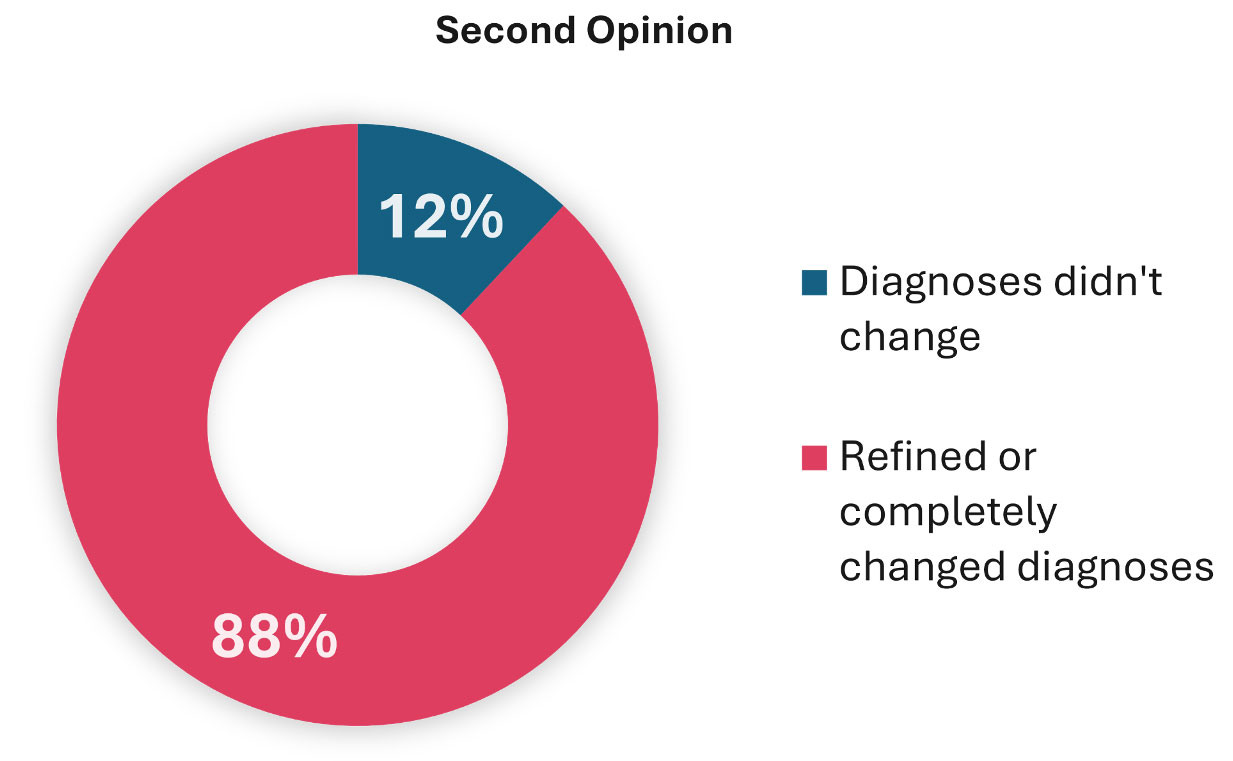 +1-855-573-2663
+1-855-573-2663
 support@secondopinions.com
support@secondopinions.com
 Dec 23, 2024
Dec 23, 2024


Unnecessary surgeries, sadly, happen.
Research indicates that a significant percentage of surgeries performed in the United States in recent years may have been unnecessary. By way of example:
The reasons behind these numbers range from misinterpretation of diagnostic imaging to operating room mishaps to reliance on outdated medical practices. Non-medical considerations, such as billing incentives, may also play a role. In light of these trends, it is clear that patients need to take a more active role in surgical decision-making.
In this article, we will explore how radiology second opinions empower patients to make more informed choices while benefitting clinicians, healthcare providers, and insurers.
Despite the clarity and reassurance they can derive from a second opinion, many patients hesitate to seek one. For some, trust in their doctor’s expertise makes a second opinion seem unnecessary, or even a betrayal – they may worry about offending their physician. Others may not even know that seeking a second opinion is an option or lack understanding of how to find another qualified physician.
Patients dealing with pain or discomfort often want immediate solutions and worry that seeking a second opinion could delay treatment. Financial concerns also play a role, as some patients may hesitate to incur additional costs. By understanding these barriers, clinicians can create an environment where patients feel empowered to explore all their options.
Imaging tools play a critical role in guiding modern treatment and surgical decisions. These tools provide detailed insights that help surgeons plan procedures with precision. However, their effectiveness depends heavily on the expertise of the radiologist interpreting the images.
Experienced radiologists offer a nuanced understanding of complex cases, often reducing the likelihood of diagnostic errors. Their expertise helps ensure that subtle but critical findings are not overlooked. This is particularly important for surgical teams who rely on accurate imaging to determine the safest and most effective approach, improving patient outcomes and reducing complications.
Yet discrepancies in imaging diagnoses between radiologists can be significant. One study found that radiologist error rates range from 3–5% for real-time evaluations. Retrospective assessments of musculoskeletal interpretations revealed that 6.7% of findings were missed, while 3.1% were overcalled. Another study found that up to 54% of positive mammography diagnoses were actually false positives.
These variations underscore how subjective image interpretation can be and highlight the complexity of identifying subtle abnormalities in imaging. They also emphasize the importance of second opinion radiology to improve diagnostic accuracy.
A radiology second opinion before surgery offers critical benefits and can significantly improve patient outcomes. Here are some key advantages:
This assurance can be invaluable in helping patients make informed decisions about their care.
Seeking a second opinion for imaging results, such as MRI second opinion or CT second opinion, can be a game-changer in your medical journey. Radiologists with specialized expertise may identify findings that were overlooked or suggest alternative interpretations. This is particularly critical in complex cases where the accuracy of the diagnosis directly impacts treatment plans.
For example, a second MRI interpretation may reveal subtle abnormalities that influence treatment strategies, while a second opinion on CT scans could highlight alternative pathways to address a medical issue. These insights not only enhance diagnostic accuracy but also offer a broader perspective on available treatment options.
From a systemic perspective, radiology second opinion services play a pivotal role in reducing healthcare costs by preventing unnecessary procedures and ensuring patients receive the most appropriate care. Misdiagnosed or overly aggressive treatment plans can lead to costly and risky interventions. Studies, such as one conducted at the Mayo Clinic, have shown that second opinions refined or completely changed diagnoses in 88% of cases, saving costs for both patients and insurers.

Second opinion consultations also foster trust and collaboration between patients and providers. When healthcare teams encourage second opinions, they demonstrate transparency and a commitment to patient-centric care. This not only empowers patients to feel more confident in their decisions but also strengthens the patient-provider relationship, enhancing treatment adherence and satisfaction.
Seeking a second opinion is not just a patient’s right but often a crucial step toward better health outcomes. Radiology second opinions help prevent misdiagnoses, unnecessary procedures, and overly aggressive treatments, empowering patients to make informed decisions. For clinicians, encouraging second opinions reflects a commitment to transparency, collaboration, and patient-centered care, building trust and improving adherence to treatment plans.
For healthcare systems, second opinions reduce avoidable surgeries and costly interventions, alleviating financial burdens for patients and insurers. In today’s medical landscape, where precision and patient empowerment are priorities, radiology second opinions are not just beneficial – they are essential. To learn more about our online services and solutions, visit our About Us page.

Our website content is posted for informational purposes only. It is not intended to be used for primary diagnoses-making and should not replace a consultation with a professional health care provider. If you have any health issues or complaints, please consult your primary physician. Healthcare data provided for informational purposes is not an alternative to an in-person physician consultation.